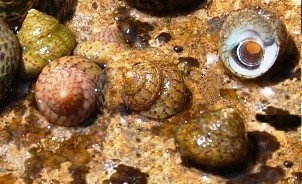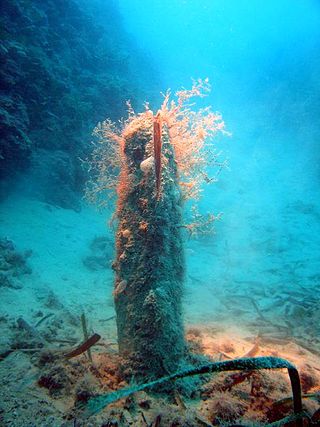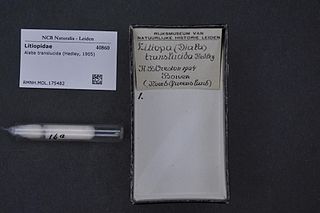
Littorina is a genus of small sea snails, marine gastropod molluscs in the family Littorinidae, the winkles or periwinkles.

Turritella is a genus of medium-sized sea snails with an operculum, marine gastropod mollusks in the family Turritellidae.

Siphonaria is a genus of air-breathing sea snails or false limpets, marine pulmonate gastropod molluscs in the family Siphonariidae, the false limpets.

Gibbula is a genus of small sea snails, marine gastropod molluscs in the subfamily Cantharidinae of the family Trochidae, the top snails.

Littoraria is a genus of sea snails, marine gastropod mollusks in the family Littorinidae, the winkles or periwinkles.

Melanopsis is a genus of freshwater snails with a gill and an operculum, aquatic gastropod mollusks in the family Melanopsidae.

Pinna is a genus of bivalve molluscs belonging to the family Pinnidae.

Cerithium is a genus of small to medium-sized sea snails, marine gastropod molluscs in the family Cerithiidae, the ceriths.

Litiopidae, common name litiopids, is a family of small sea snails, marine gastropod molluscs in the clade Sorbeoconcha.

Clavatulidae is a taxonomic family of sea snails, marine gastropod mollusks in the superfamily Conoidea. The family is not well differentiated morphologically.

Perrona is a genus of sea snails, marine gastropod mollusks in the family Clavatulidae.

Tricolia is a genus of sea snails, marine gastropod molluscs in the subfamily Tricoliinae of the family Phasianellidae.
Gibborissoia virgata is a species of sea snail, a marine gastropod mollusk in the family Litiopidae.

Rissoa is a genus of minute sea snails, marine gastropod mollusks or micromollusks in the family Rissoidae.

Zebina is a genus of minute sea snails, marine gastropod mollusks or micromollusks in the family Zebinidae.

Trigonostoma is a genus of sea snails, marine gastropod mollusks in the family Cancellariidae, the nutmeg snails.

The Cantharidinae are a taxonomic subfamily of very small to large sea snails, marine gastropod molluscs in the family Trochidae, common name top snails.

Genota is a genus of sea snails, marine gastropod mollusks in the family Borsoniidae.
Archimediella is a genus of sea snails, marine gastropod mollusks in the family Turritellidae.















